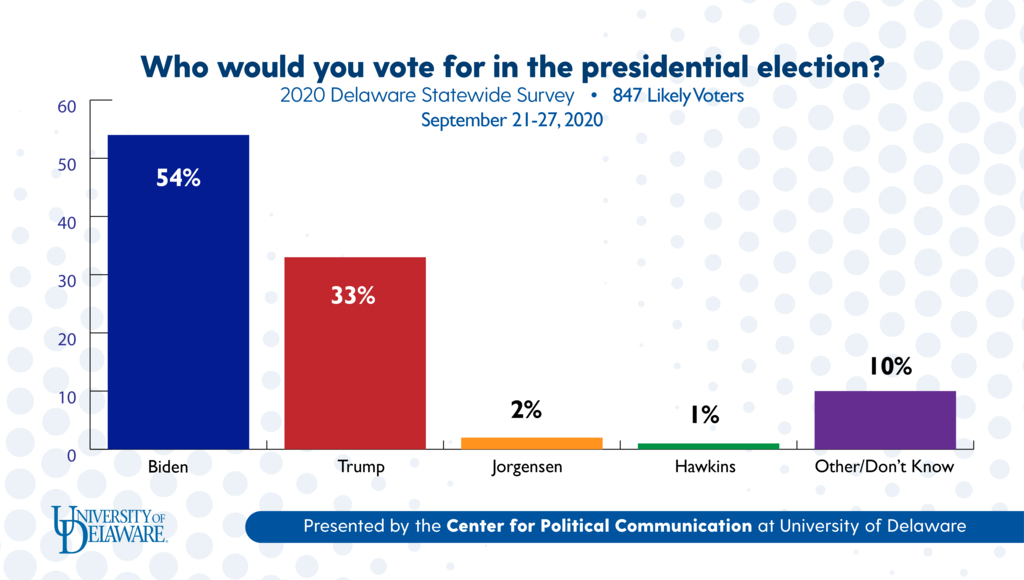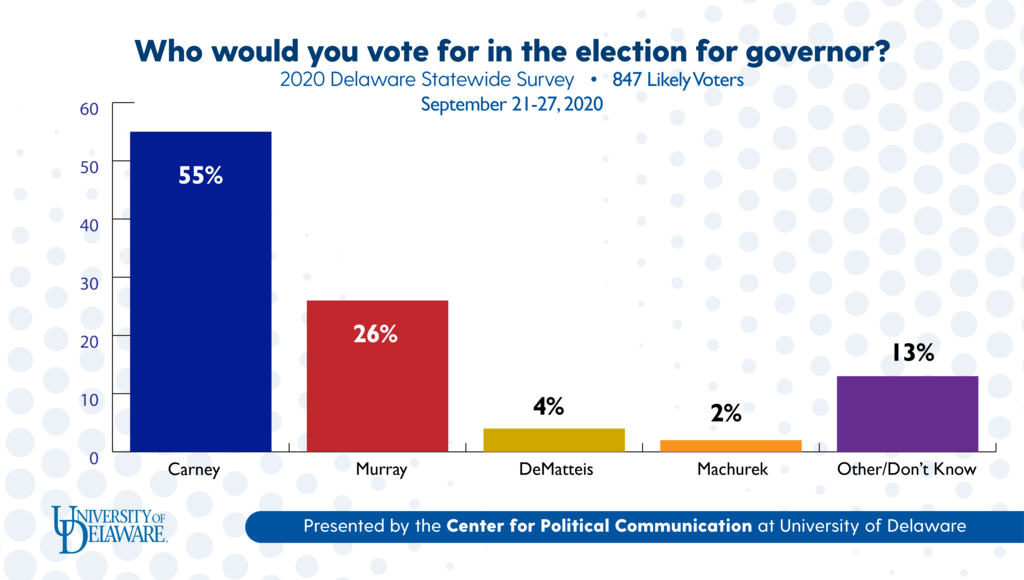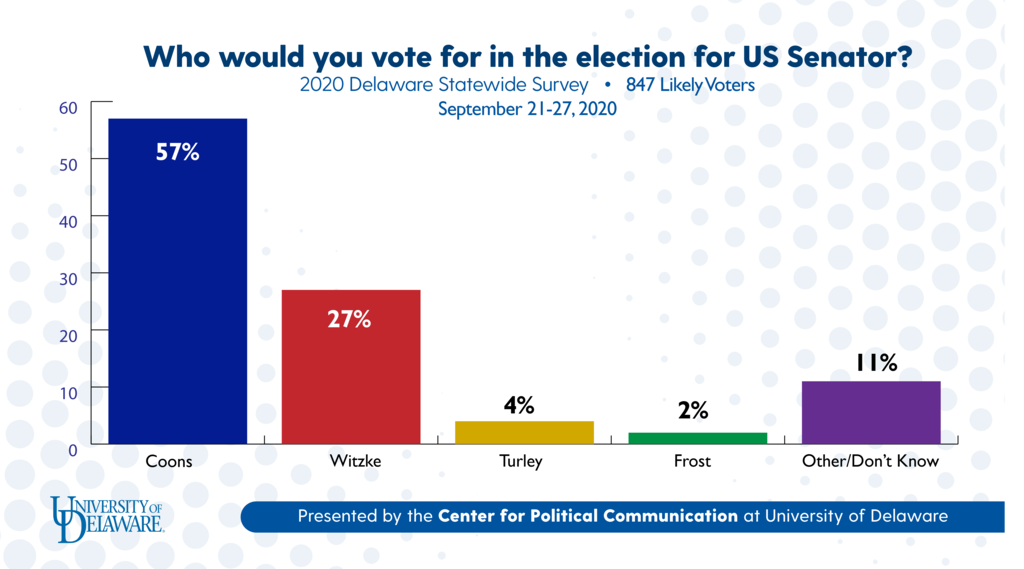Delaware Voters 2020 : Democrats lead by big margins in Delaware
Bolstered by support among women voters
Read the press release.
OCTOBER 5, 2020″Democratic presidential nominee Joe Biden holds a commanding lead in Delaware, as do his party’s candidates in the statewide races for governor, U.S. Senator, and U.S. Representative.
A new University of Delaware Center for Political Communication poll shows that 54% of likely voters in Delaware say they’ll vote for Biden, while only 33% support Donald Trump. The Democratic candidate’s 21-point lead is well outside the survey’s margin of error.
“The poll results confirm that Biden is the heavy favorite to win his home state’s electoral votes,” said Professor Paul Brewer, Research Director of the Center for Political Communication. “Biden’s margin in Delaware is also consistent with a 7 to 8 point national lead for him.”
In Delaware, Biden leads Trump by more than a two to one margin among women (60% to 26%) and New Castle County voters (63% to 26%). The presidential race is much closer among men (46% to 43%), Kent County voters (41% to 44%) and Sussex County voters (40% to 44%).

Gov. Carney holds 29-point lead
Delaware Gov. John Carney holds a 29-point lead in his race for reelection. Among those polled, 55% support the Democratic incumbent, while 26% of likely voters say they’ll cast their ballot for Republican nominee Julianne Murray.
Carney has a 40-point lead among women (61% to 21%) and a 15-point lead among men (49% to 34%). He holds a three to one margin over Murray in New Castle County (63% to 20%), though the race is closer in Kent County (42% to 34%) and Sussex County (43% to 38%).

The incumbents are also far ahead in Delaware’s Congressional races. In the U.S. Senate race, Democrat Chris Coons holds a 30-point margin over Republican Lauren Witzke, 57% to 27%. In the U.S. House race, Democrat Lisa Blunt Rochester leads Republican Lee Murphy by 22 points, 51% to 29%.
Coons and Blunt Rochester lead by wide margins among women (63% to 20% for Coons, 57% to 23% for Blunt Rochester) and narrower margins among men (50% to 36% for Coons, 44% to 36% for Blunt Rochester). Both Democrats dominate in New Castle County (67% to 19% for Coons, 58% to 23% for Blunt Rochester). The U.S. Senate race is more competitive in Kent County (Coons 40%, Witzke 30%) and Sussex County (Coons 43%, Witzke 45%). Similarly, Blunt Rochester holds a smaller lead over Murphy in Kent County (42% to 33%) and is essentially tied with him in Sussex County (41% each).
“The big overall leads for Carney, Coons, and Blunt Rochester reinforce the First State’s status as a solidly blue state,” said Brewer. “Democrats have dominated recent statewide elections in Delaware. So far, none of this year’s Republican candidates shows signs of breaking that pattern.”


About the study
The National Agenda Opinion Project research was funded by the University of Delaware’s Center for Political Communication (CPC) with support from the College of Arts and Sciences. The study was supervised by the CPC’s Research Director, Paul Brewer, a professor in the Departments of Communication and Political Science & International Relations.
The study was fielded by Abt Associates and obtained telephone interviews with a representative sample of 976 adults living in Delaware, including 911 registered voters and 847 likely voters. A total of 327 respondents were interviewed on a landline telephone and 649 were interviewed on a cell phone. Interviewing was conducted from September 21-27, 2020, in English. Samples were drawn from both landline and cell phone random digit dialed (RDD) frames and a list of Delaware registered voters. Both the landline and cell phone RDD samples were provided by Dynata.
Statistical results are weighted for telephone service, sample frame, age, gender, race/ethnicity, education, and voter registration status by county to match the population parameters of the adult population in Delaware. The margin of sampling error for registered voters is – 4 percentage points (the margin of sampling error is larger for results from subsamples). Overall, the response rate (AAPOR RR3) was 2% for the landline RDD sample, 3% for the cell RDD sample, 4% for landline numbers from the RV sample, and 2% for cell numbers from the RV sample.
Please contact Paul Brewer at (302) 831-7771 for more details about the survey’s methodology.
